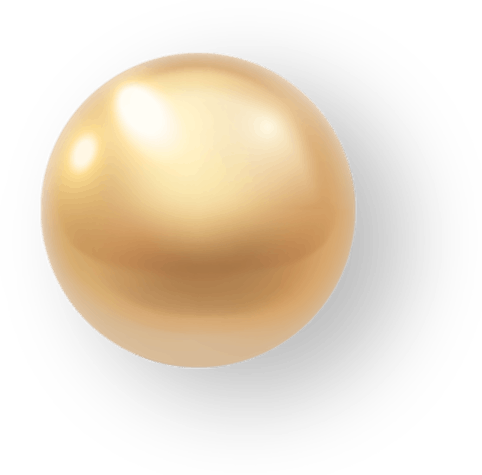
Tummy tucks (or abdominoplasties) have been around for quite some time. When patients hear about tummy tucks, many will often share a story of a friend with a prolonged recovery, long visible scar, shapeless abdomen, and an unattractive belly button (umbilicus). To many, a tummy tuck is simply removing the skin and fat of the anterior abdomen, tightening the muscle, and cutting a new hole for the belly button. It is thought that patients walk hunched over with drains and sometimes have to stay overnight in a hospital or surgery center before they can go home. This is how tummy tucks used to be performed in the 2000s — and sadly, at most practices, it still is!
At Liu Plastic Surgery, we have given the tummy tuck procedure a bit of a “mommy makeover.” By incorporating the latest surgical techniques and implementing the most advanced anesthetic care, we have deconstructed and improved all the components of the tummy tuck that used to concern patients. This has resulted in happier patients with quicker recovery, less pain, and more inconspicuous scars — all without sacrificing aesthetic outcomes.
No pain, no gain? Not with tummy tuck surgery!
Let’s face it: patients don’t like taking pain medications. It takes some time for them to kick in, and sometimes, they just make patients feel groggy or nauseated. So we started to brainstorm! Why give patients medication that affects the entire body if the surgery is isolated to the abdomen? This was precisely the idea that led us to focus on giving pain relief where you need it. The concept sounds simple, but it was difficult to achieve previously, due to the short duration of traditional local anesthetic medications. This has since changed though with the availability of the pain catheter. At the time of surgery, a small pain catheter (as thin as a spaghetti noodle!) is placed inside the abdomen. The catheter is then connected to a bulb reservoir outside of the body. The patient carries this bulb for up to five days after surgery as it automatically administers pain medication into the abdomen (the location of the pain). After all the medication is delivered, the catheter is easily slipped out of the body and discarded. Administering medication into the abdomen for up to five days has dramatically reduced the postoperative pain of our patients. On average, patients experience a quicker recovery with less discomfort and less need for additional pain medications. We have even seen patients who have required almost no opiate pain medicine after surgery, as the pain pump does all the work!
No drains, please!
There is one constant that all patients share after tummy tuck surgery: they hate their drains. Nearly all patients complain about drains, and why not? They are cumbersome to carry around, and they are painful (especially if tugged on)! Also, who wants to look at a bulb filled with red/orange fluid? Thanks to advances in surgical techniques, drains are now the exception rather than the rule. We now perform surgery in a way that helps the body reabsorb the fluid and prevent its buildup rather than use an external drain. Ten years ago, 100% of our tummy tuck patients had drains. Now, the number is less than 1%, and patient comfort and satisfaction has gone up while recovery times have gone down! Not having a drain to worry about after surgery makes patients the most comfortable postoperatively.
Sleeping Beauty
Our moms have a lot on their plate. A tummy tuck is a time for the moms to give back to themselves. With all that’s going on in their lives, moms deserve a little R&R, but we know many of them need to return to taking care of their family ASAP! That’s why when we looked at the anesthesia requirements for abdominoplasty, we knew we could do more. Rather than using a traditional, all-or-none “general anesthesia,” we decided that our moms deserve a “Sleeping Beauty” anesthesia. To do so, a board-certified anesthesiologist places an epidural catheter to precisely deliver pain medication where the patient needs it — and nowhere else. During the operation, the anesthesiologist monitors the patient’s comfort level and gives a short-acting IV medication to give the patient a light nap. If needed, a soft breathing tube may be used for safety, but patients can breathe on their own during the procedure. After surgery, the epidural is removed, the short-acting IV medication is turned off, and the soft breathing tube (if needed) is removed. The abdominal pain catheter is activated prior to epidural removal, so there is no gap in pain medication. Following surgery, patients report being alert, awake, and ready to recover. Giving more precise medication where it is needed (and less where it isn’t) allows our plastic surgery team to administer the lightest form of anesthesia needed for comfort; ultimately enabling patients to have less postoperative side effects and a quicker recovery.
Innie or outie?
The belly button is the centerpiece of the abdomen like the nose is the centerpiece of the face. Often, the belly button is either forgotten until the end of the procedure, or it is simply delivered through a new abdominal opening without any aesthetic contour to create the appearance of an “innie.” (If you are naturally an “outie,” or if you have an umbilical hernia, it is sometimes possible to repair the hernia and create an innie!) The belly button should be svelte and have a pleasing concave contour. There should also be a shadow to highlight the contour.
At Liu Plastic Surgery, we pride ourselves in taking great care to not just deliver the umbilicus through a new abdominal opening. Instead, we have developed our own technique to open the skin and design the shape of the belly button. In addition, we contour the area around the umbilicus and secure it in a way to highlight the shapes and shadows of an aesthetic belly button. In many cases, we can even hide the scar within the belly button itself. The end result is an improved belly button you will be proud to show!
Barely There
Potential scarring can have a major impact on patient satisfaction after tummy tuck surgery. Not all aspects of scarring can be controlled with surgery, as there are certain “scar genes” that are inherent in certain people, as well as particular parts of the body. There are also other influential aspects that, as plastic surgeons, we optimize for our patients. While it is impossible to have a scarless surgery, we utilize the latest, scientifically proven scar therapy products to minimize scar appearance and ensure patients can achieve the best aesthetic outcome. These treatment plans can be discussed during your consultation, as well as postoperative recovery.
Patients considering tummy tuck surgery can feel at ease knowing the board-certified plastic surgeons at Liu Plastic Surgery use the most innovative techniques and technology to ensure the highest level of comfort during and after abdominoplasty.



